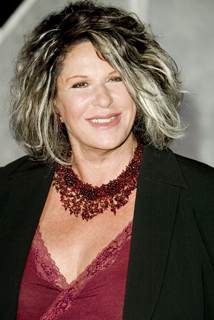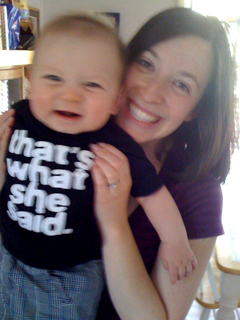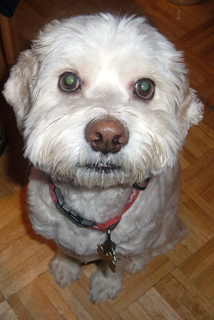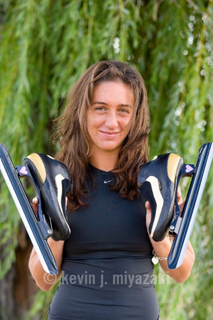Cheers! Chicago: Outdoor spots for dining and lounging
Permanent linkSpring is here, and boy, it couldn’t come any sooner! I love the spring, especially in Chicago. It’s quite a spectacle watching this great city begin to awaken from its long and dreary hibernation, to emerge from behind those heavy grey clouds that seemed to hover and blanket everything in sight. The smell of fresh green grass, the sounds of birds chirping and cooing, envelops you in one giant breath and doesn’t let go. The city is coming alive again, and with it comes some amazing places to check out, nosh, kibbitz and schmooze with friends and family. Nu? Let’s get to it!
Spring is also one of my favorite times of the year because of its effect on the seasonal culinary and beverage reincarnation. The Green City and Farmers Markets bring some of the greatest food and drink, and you can bet the top restaurants in the city know it, too. Both markets are open to the public, but if you want to grab the best and perhaps rub shoulders with Rick Bayless as he choices out fresh produce for his restaurants, go there and go early. Make a day of it. Close your eyes and follow your nose, get back to your roots and explore everything you can get your hands (and nose) on, so you can take it home and cook and eat like the best without having to step out! But whether you go out or dine at home, be sure to make your way outdoors and soak in that spring goodness!
Know what else? Several bar and establishments are opening their respective outdoor and rooftop sections for dining and lounging. Yay! I got the lowdown on a handful of places you definitely don’t want to miss. With the wonderful weather and pleasant al fresco nights ahead, here is my short list of outdoor spots.
• ROOF at the Wit Hotel – Yes, this penthouse, ultra-chic and ultra-trendy lounge is still one of the best hangouts when looking for an outdoor escape. They still serve up amazing Mediterranean-themed small plates as you observe the hustle and bustle of nighttime Chicago, and the cocktails won’t stop flowing until you say so. While it is a place to be seen, it’s a rooftop nevertheless, and it does boast one of the more scenic views of the city. Go early to avoid waiting in line on the ground floor.
• Vertigo at the Dana Hotel and Spa – Vertigo has been around for a while now, and it still knows how to throw a party outside. Cushy seating and cute botanical arrangements drape this great piece of outdoor landscape. Combine the view with a good cocktail and you’re set for a fantastic night under the stars.
• Piccolo Sogno – This spectacular River West Italian spot has an amazing outdoor patio that is perfect for relaxing and enjoying the great Chicago springtime. While it may not be on a 27 story rooftop overlooking the city, you can easily lose yourself in the moment and firmly believe you are at an outdoor café in Italy sampling some delicious treats and basking in the warm sunlight. Me scuzi signore! And if you can’t get seated outside, don’t fret – they’ve got vertical gardens boasting fresh flowers and herbs to keep your eyes and ears on sharp alert. Oh, and let’s not forget the fabulous handmade pizzas and delicious Italian wines they serve up, too!
• C-View – I know, I know. Big seafood restaurant. I keep kosher so this would not be among the first places I would recommend to eat, either. That being said, the food really is incredible, but the rooftop bar C-View takes the cake. A gorgeous view that almost spans 360 degrees, this rooftop scene is definitely one to tipple towards when scoping out Chicago nights this season. Great place for a date or a girls’ night out— either way you are on your way to some good times.
• Citizen – I honestly can’t say enough good things about this place. It’s got a great vibe and a crazy rooftop that is really one of the coolest places to sightsee. The cocktails and service are ridiculous, and it’s an awesome choice as one of your many stops while rooftop bar crawling this spring and summer. Don’t pass this place up.
• Rock Bottom – You can’t miss this lively establishment standing tall and proud on the corner of LaSalle and Grand Avenue. Unbelievable lineup of craft beers to quench that thirst, tasty American style food, and of course, a bumping rooftop that will convince you to out long into the night. Plenty of good music and friendly faces will keep you coming back for more; I know I will!
• Honorable Mentions – Popsicle cocktails by the river at DeLaCosta, ski shots at Uberstein, and Chicago’s best new wine shop Juicy Wine Company’s rooftop oasis.
The Kentucky Derby is also this Sunday, and in honor of the long-standing spring event, I encourage all drinkers, wine, beer and spirit alike, to sample the quintessential Derby cocktail and one of America’s oldest libations, the Mint Julep. While a super-chilled silver or copper pewter is ideal, you can easily sip this sensation tall over crushed ice. It’s a simple four ingredient drink that has a well-balanced flavor with a nice refreshing kick at the end to entice another generous sip.
Choose a well-made Kentucky straight bourbon – I usually go with Woodford Reserve (Derby sponsors), Buffalo Trace or good ol’ Maker’s Mark – a handful of VERY fresh mint leaves, a couple of bar spoons of cane sugar or raw sugar (to taste if you want it more or less sweet) and very fine crushed ice. Muddle mint and sugar at the bottom of the glass, add crushed ice to top and gently stir to pull the flavors up from the bottom of the glass. Add 2 ounces of choice bourbon, stir gently, fill to top with more crushed ice, and garnish with a freshly smacked mint sprig.
Want a non-alcoholic alternative? Try this: substitute the bourbon and sugar with either Dr. Pepper or Barq’s Root beer (or a combo, or your favorite can of diet cola) and sip away!
So whether you’re kicking back with a Julep watching the Derby or chilling with a cocktail al fresco at one of Chicago’s many outdoor scenes, the spring and summer of 2010 looks to be an incredible and fun journey!
L’Chaim!



.jpg)




.jpg)



